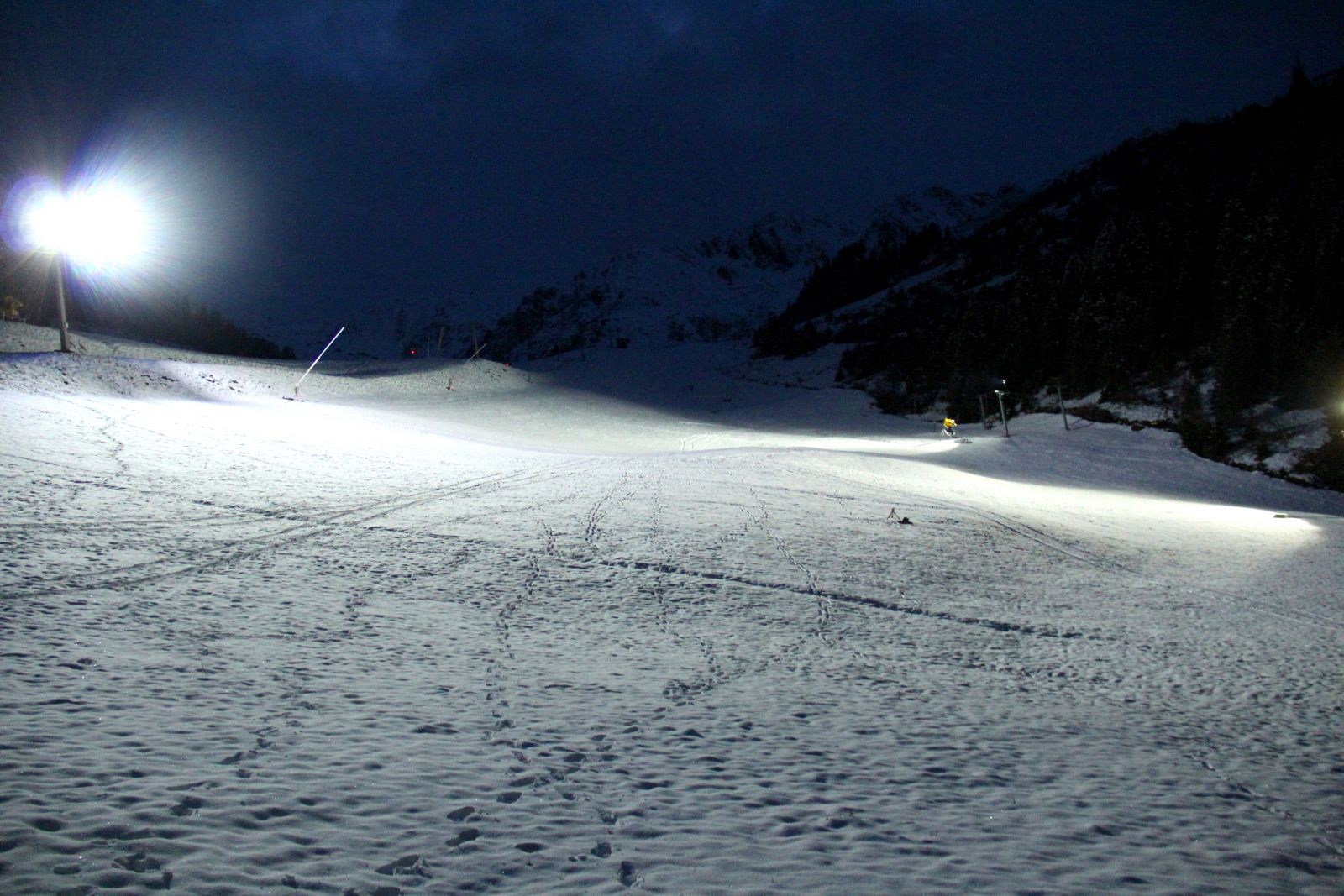Application
THE BEST LIGHT DISTRIBUTION
We can help you ascertain the number of Arctic Beams you need to light up your ski slope. Not one slope is the same. Good illumination comes down to visiting the slope and incorporate its characteristics - distances, inclination, bumps etc.- in order to create a lighting plan through computer aided simulation which is then used on the ground to fine-tune and pinpoint the luminaires at the right spots to bring about the best light distribution.

THREE LEVELS OF COMPETITION
The guidelines for ski slope lighting, as with all sports lighting, depend on the level of competition. Referring to the IES (Illuminating Engineering Society of North America) and the European Standard NEN-EN 12193, there are three levels of competition and each level has its own lighting requirements.
The Arctic Beam uses a standard beam angle of 60°. Local slope characteristics may require narrower angles. Mounting height is between 8 - 12 meters from ground level. Skiing requires the whole piste to be uniformly illuminated from top to bottom so that surface irregularities are revealed. The ideal positioning for luminaires is on either side of the slope and aimed across and down the slope. However, it is economically much more efficient to have poles erected on only one side of the slope and that is the case along many ski slopes around the world. A further breakdown of the different skiing disciplines with the required illuminance levels, shows that for class III recreational Alpine / freestyle skiing an average illuminance of 20 lux is needed with a minimum of 4 lux (since Emin/Em=0,2).
| Lighting Class I | Lighting Class II | Lighting Class III |
|
Top level competition such as international and national which will generally involve large spectator capacities with long potential viewing distances. Top level training can also be included in this class. |
Mid level competition such as regional or local club competition which generally involve medium size spectator capacities with medium viewing distances. High level training can also be included in this class. |
Low level competition such as local or small competition which generally do not involve spactators. General training, physical education (school sports) and recreational activities will also come into this category. |
| illuminance alpine/freestyle | illuminance jump run down | illuminance jump landing | illuminance cross-country skiing | |||||
|
Class |
Em lux |
Emin/Em |
Em lux |
Emin/Em |
Em lux |
Emin/Em |
Em lux |
Emin/Em |
|
I |
100 |
0,5 |
150 |
0,5 |
300 |
0,7 |
20 |
0,3 |
|
II |
30 |
0,3 |
50 |
0,3 |
200 |
0,6 |
10 |
0,3 |
|
III |
20 |
0,2 |
20 |
0,3 |
200 |
0,6 |
3 |
0,1 |
Light calculations and field testing have shown that one Artic Beam achieves considerably more than 20 lux when illuminating a 800 m2 area (40mX20m), with a gradual decrease in lux levels for the second and third 800m2 area, but lux levels never fall below the minimum of 4 Lux.




